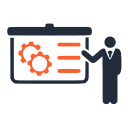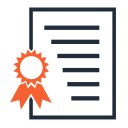Mentors

Has spent two decades in the corporate world in areas as diverse as Cryogenics, Steel, International Trade, Consulting and IT with organizations such as British Oxygen, Tata Steel, PwC and Compaq-HP. He has taught at the University of Iowa and has been a visiting faculty at IIM Lucknow, IIM Raipur, IIM Udaipur, IIM Shillong.

Charanpreet Singh
BTech (IIT Kanpur), MBA (University of Iowa), Co-Founder and Associate Dean - PRAXIS

He has worked as an online SAS trainer at Wireclass and provided online analytics training in U.S.A. and U.K. He worked as a Professor of Data Mining, Data Visualization and Advanced Analytics at iNurture Education Solutions Pvt. Ltd after which he has joined Praxis Business School as an Assistant Professor of Business Analytics.

Gourab Nath
MSC (WB State University)

Comes with an experience of 27 years delivering Management and IT consulting services in large organizations like (PwC) and CMC Ltd. He was a partner in the Management Consultancy Business at PwC and led large software projects in India and abroad.

Jaydeep Mukherjee
BTech (IIT Kharagpur), MTech (ISI Kolkata)

Suresh Krishnaswamy (popularly known as Sky) heads our Big Data & Business Analytics Center of Excellence. Sky has rich experience of over 26 years ranging from IT consulting, transition, transformation,applications development, to strategy making and business analyses with leading global IT and Consulting services companies in India and abroad.

Suresh Krishnaswamy
Head - COE - Big Data and Analytics

Has close to 2 decades of industry and 5 years of teaching experience. Has worked as Senior Scientist at TCS Innovation Labs after stints with Akamai Technologies, ONGC and Hindustan Motors. His areas of interest include Advanced Statistical Modeling, Data Mining, Graph Theory, Discrete Math and Internet Technologies.

Jaydip Sen
B.E (Jadavpur University), M.Tech(ISI, Kolkata); Pursuing PhD in Information Privacy in IoT

He is listed as one of the 10 prominent analytics academicians in India by Analytics India Magazine.Has spent nearly two decades in the IT, software and management consultancy business and has worked in Tata Steel, Tata IBM, PwC, where he was a partner and in IBM where he was the head of the Kolkata Delivery Centre.

Dr. Prithwis Mukerjee
B.Tech (IIT Kharagpur), M.S., Ph.D. (University of Texas at Dallas) Program Director - Business Analytics

Has been one of the most prominent market researchers of the country in the last decade and has worked in the top three multinational MR agencies of India - The Nielsen Company, TNS and IMRB International for 13 years in different functional and leadership roles. He was Associate Director at Nielsen and Group Business Director at IMRB International.

Prasenjit Das Purkayastha
M.Sc (J.U); PGDM (Goa Institute of Management)

Has worked in the industry for 4 years in Planning and Operations at HPCL prior to joining academics. He is actively involved in corporate training and has successfully completed training sessions on Data Mining processes in organizations like Abzooba, Infosys, TCG, ICICI Bank.















